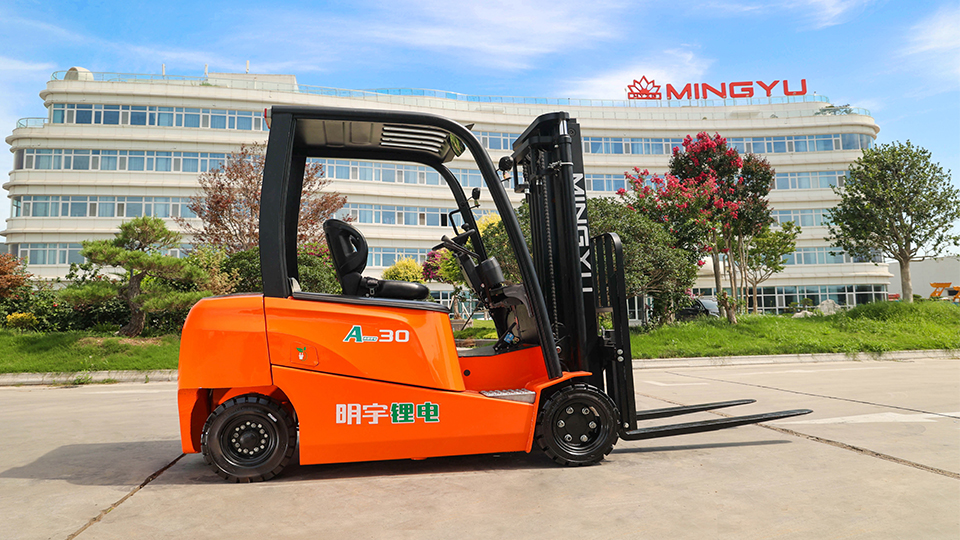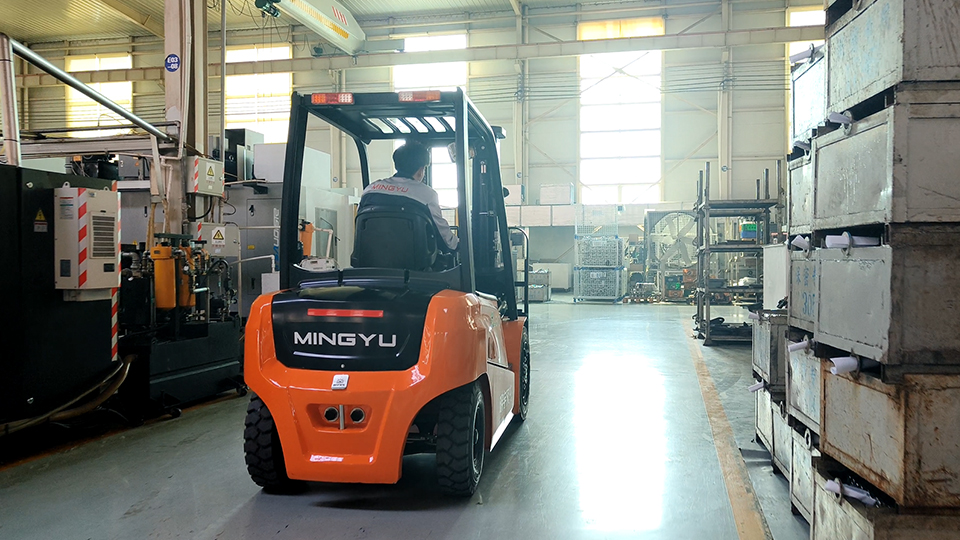
How to Get a Forklift Certification: A Comprehensive Guide
Forklifts are indispensable tools in various industries, including warehousing, construction, manufacturing, and logistics. Operating a forklift requires specialized skills and knowledge to ensure safety and efficiency in the workplace. Whether you're looking to operate a helie forklift, an all-terrain forklift, a Manitou forklift, or a 3-ton diesel forklift, obtaining a forklift certification is a critical step. This article will guide you through the process of getting certified, the types of forklifts you might encounter, and factors like forklift price that could influence your decision.
Why Forklift Certification is Important
Forklift certification is not just a formality; it is a legal requirement in many countries. The Occupational Safety and Health Administration (OSHA) in the United States, for example, mandates that all forklift operators must be trained and certified. The certification ensures that operators understand the safety protocols, operational techniques, and maintenance requirements of forklifts. This reduces the risk of accidents, injuries, and damage to equipment or property.
Operating specialized forklifts like a helie forklift or an all-terrain forklift requires even more expertise due to their unique design and functionality. Without proper training, operators may struggle to handle these machines safely, especially in challenging environments like uneven terrain or confined spaces.
Types of Forklifts You Might Operate
Before diving into the certification process, it’s essential to understand the different types of forklifts you might encounter in your career. Each type has specific features and use cases, and your training will often be tailored to the kind of forklift you’ll be operating.
1. Helie Forklift
Helie forklifts are known for their versatility and compact design, making them ideal for indoor use in warehouses and factories. They are electric-powered, which makes them environmentally friendly and suitable for environments where emissions must be minimized.
As the name suggests, all-terrain forklifts are designed to operate on rough or uneven surfaces. They are commonly used in construction sites, agriculture, and other outdoor settings. These forklifts have robust tires and powerful engines to handle challenging conditions.
3. Manitou Forklift
Manitou is a well-known brand that specializes in rough-terrain forklifts and telehandlers. These machines are often used in construction and agriculture due to their ability to handle heavy loads and navigate uneven terrain.
A 3-ton diesel forklift is a heavy-duty machine designed for lifting and moving large loads. Diesel-powered forklifts are typically used outdoors due to their emissions and are ideal for industries like shipping and logistics.
Understanding the type of forklift you’ll be operating is crucial because it determines the specific skills and knowledge you’ll need during your certification training.
Steps to Get a Forklift Certification
Obtaining a forklift certification involves several steps, from choosing a training program to passing the final evaluation. Here’s a detailed breakdown of the process:
1. Research and Choose a Training Program
The first step is to find a reputable forklift training program. Look for programs that are OSHA-compliant or meet the regulatory standards in your country. Many vocational schools, community colleges, and private training centers offer forklift certification courses. Some employers also provide in-house training for their employees.
When selecting a program, consider the type of forklift you’ll be operating. For example, if you’re working with a Manitou forklift or an all-terrain forklift, ensure the training program covers rough-terrain operation.

2. Enroll in the Training Program
Once you’ve chosen a program, the next step is to enroll. Most programs require you to be at least 18 years old and have a high school diploma or equivalent. Some programs may also require a valid driver’s license.
3. Complete Classroom Training
The training program typically begins with classroom instruction. During this phase, you’ll learn about:
Forklift safety regulations and standards
The anatomy of a forklift (e.g., mast, forks, counterweight)
Load capacity and stability principles
Pre-operation inspections and maintenance
Hazard identification and avoidance
This theoretical knowledge is essential for understanding the fundamentals of forklift operation and safety.
4. Hands-On Training
After completing the classroom portion, you’ll move on to hands-on training. This is where you’ll get practical experience operating a forklift under the supervision of a qualified instructor. Depending on the program, you may train on different types of forklifts, such as a helie forklift, a 3-ton diesel forklift, or an all-terrain forklift.
During hands-on training, you’ll learn how to:
Start, stop, and maneuver the forklift
Lift, lower, and stack loads
Navigate tight spaces and ramps
Operate the forklift on uneven terrain (if applicable)
5. Pass the Written Exam
At the end of the classroom training, you’ll need to pass a written exam to demonstrate your understanding of forklift operation and safety. The exam typically covers topics like load capacity, stability, and OSHA regulations.
6. Pass the Practical Evaluation
The final step in the certification process is the practical evaluation. During this test, you’ll be required to operate a forklift and perform specific tasks, such as lifting and moving loads, navigating obstacles, and parking the forklift safely. Your instructor will evaluate your performance based on safety, accuracy, and efficiency.
7. Receive Your Certification
If you pass both the written exam and the practical evaluation, you’ll receive your forklift certification. This certification is usually valid for three years, after which you’ll need to undergo refresher training to renew it.
Factors to Consider When Choosing a Forklift
While getting certified is essential, it’s also important to understand the factors that influence the choice of forklift for a specific job. One of the most significant factors is the forklift price, but there are other considerations as well.
1. Forklift Price
The cost of a forklift can vary widely depending on the type, brand, and features. For example, a helie forklift may be more affordable than a Manitou forklift due to differences in design and capabilities. When considering the forklift price, it’s essential to factor in long-term costs like maintenance, fuel, and repairs.
2. Type of Forklift
As discussed earlier, the type of forklift you choose should align with your specific needs. For indoor use, an electric forklift like the helie forklift is ideal, while an all-terrain forklift or 3-ton diesel forklift is better suited for outdoor applications.

3. Load Capacity
The load capacity of a forklift determines how much weight it can safely lift and move. For heavy-duty tasks, a 3-ton diesel forklift is a reliable choice, while smaller loads may only require a standard electric forklift.
4. Terrain
Consider the environment where the forklift will be used. Rough-terrain forklifts like the Manitou forklift are designed for uneven surfaces, while standard forklifts are better for smooth, flat surfaces.
5. Fuel Type
Forklifts can be powered by electricity, diesel, or propane. Electric forklifts are eco-friendly and cost-effective for indoor use, while diesel forklifts are more powerful and suitable for outdoor applications.
Tips for Maintaining Your Forklift Certification
Once you’ve obtained your forklift certification, it’s important to maintain it and stay updated on industry best practices. Here are some tips:
Attend Refresher Courses: OSHA requires forklift operators to undergo refresher training every three years. This ensures that you stay updated on safety regulations and operational techniques.
Practice Regularly: The more you operate a forklift, the more proficient you’ll become. Regular practice helps you maintain your skills and confidence.
Stay Informed: Keep up with industry trends and advancements in forklift technology. For example, newer models of helie forklifts or Manitou forklifts may have updated features that improve efficiency and safety.
Follow Safety Protocols: Always adhere to safety guidelines, even if you’re an experienced operator. This includes conducting pre-operation inspections, wearing appropriate safety gear, and avoiding risky maneuvers.
Conclusion
Obtaining a forklift certification is a valuable investment in your career, whether you’re operating a helie forklift, an all-terrain forklift, a Manitou forklift, or a 3-ton diesel forklift. The certification process involves classroom training, hands-on practice, and evaluations to ensure you have the skills and knowledge to operate a forklift safely and efficiently.
When choosing a forklift, consider factors like forklift price, load capacity, terrain, and fuel type to find the right machine for your needs. By maintaining your certification and staying informed about industry best practices, you can ensure a long and successful career as a forklift operator.
Whether you’re just starting or looking to advance your skills, forklift certification opens the door to numerous opportunities in various industries. So, take the first step today and enroll in a training program to get certified!
Name: selena
Mobile:+86-13176910558
Tel:+86-0535-2090977
Whatsapp:8613181602336
Email:vip@mingyuforklift.com
Add:Xiaqiu Town, Laizhou, Yantai City, Shandong Province, China